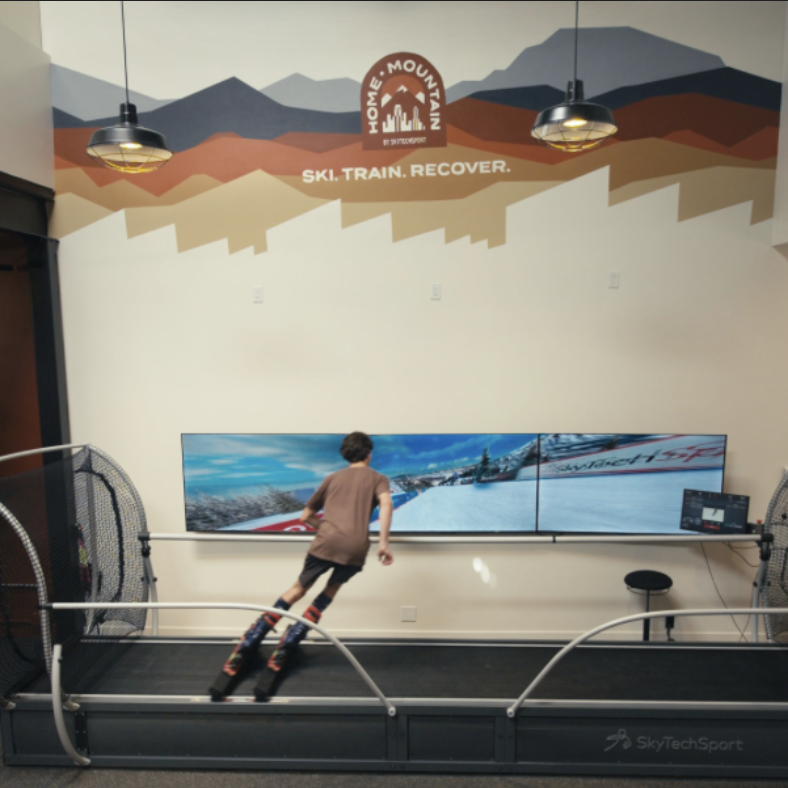
Quick reactions and sharp movements can make the difference between winning and losing in sports. Whether you’re skiing through a slalom course, dodging defenders in soccer, or adjusting your stance in snowboarding, agility helps you move faster, stay balanced, and adapt to unpredictable situations.
Athletes with better agility react quicker, recover from mistakes faster, and maintain control even at high speeds. In this guide, we’ll cover the best agility training exercises, how to develop faster reaction times, and why ski simulators can enhance agility for winter athletes.
Agility is the ability to change direction quickly and efficiently while maintaining balance. It’s critical for athletes in fast-moving sports like skiing, snowboarding, basketball, soccer, and tennis.
• Faster reaction time – Helps adjust quickly to opponents or terrain changes
• Better balance and coordination – Reduces the risk of falls or missteps
• More efficient movement – Increases speed without wasting energy
• Injury prevention – Stronger stabilizer muscles support knee and ankle joints
Improving agility allows you to move more fluidly and react faster in competitive situations.
1. Lateral Cone Hops (For Quick Footwork & Edge Control)
Lateral movements train your legs and core to adjust direction quickly, just like making fast turns in skiing or cutting across a court in basketball.
• Place cones in a straight line, about 2 feet apart
• Jump side to side, keeping movements light and controlled
• Perform 3 sets of 20 seconds
2. Agility Ladder Drills (For Foot Speed & Reaction Time)
Ladder drills develop fast-twitch muscle fibers, helping athletes improve speed and coordination.
• Perform high knees, lateral steps, or in-and-out foot drills through the ladder
• Stay light on your feet and move as fast as possible
• Complete 3 rounds, resting 30 seconds between sets
3. Reaction Ball Drills (For Faster Reflexes & Hand-Eye Coordination)
Unpredictable movements force the brain and body to react instantly, just like adjusting to changing conditions in skiing or avoiding an opponent in team sports.
• Drop a small reaction ball and try to catch it after the first bounce
• Vary the height and angle of the drop to keep movements unpredictable
• Perform 3 sets of 10 catches
4. Shuttle Runs (For Explosive Acceleration & Deceleration)
Shuttle runs improve start-stop speed and lateral agility, crucial for skiing, snowboarding, and field sports.
• Sprint 5–10 yards to a cone, touch the ground, and sprint back
• Repeat for 3-5 sets with short recovery breaks
• Increase speed each round to train explosive movement
5. Single-Leg Balance Drills (For Stability in Quick Movements)
Balance is key in agility—without it, quick movements become sloppy or inefficient.
• Stand on one leg for 30 seconds, then switch
• Progress to balancing on a Bosu ball or unstable surface
• Perform 3 sets per leg
Skiers and snowboarders need agility to adjust to terrain changes, edge control, and high-speed turns. While traditional agility drills help, sport-specific training is even better.
The SkyTechSport Ski Simulator helps train agility by:
• Simulating real ski edge control, forcing fast reactions
• Improving balance and coordination with dynamic movement
• Providing real-time feedback to sharpen technique
If you want to react faster on the slopes, agility drills combined with ski-specific training will help you handle tight turns and changing terrain with more confidence.
Want to improve agility for skiing, snowboarding, or other sports? The SkyTechSport Ski Simulator helps athletes develop real-world agility, balance, and reaction time—before stepping onto the snow or field. Learn more here.
